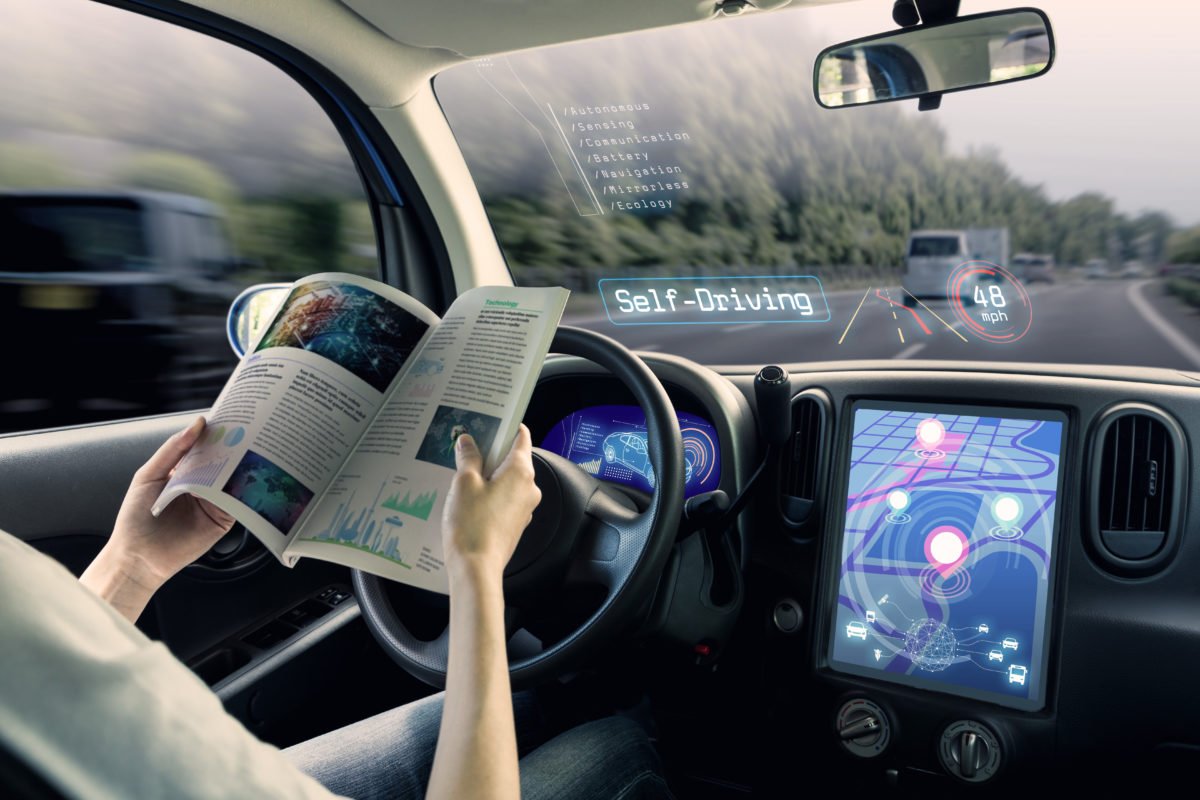ANALYSIS | The Promises and Risks of Self-Driving Cars
Photo Credit: metamorworks/Adobe Stock Images via PBS
In recent years, self-driving cars have been turned from a sci-fi fantasy into a reality. These vehicles have promised to revolutionize the way we travel and reshape the many industries associated with transportation.
Many companies, from Tesla to Google to Uber to Mercedes, are working on their version of the automated car. These cars are designed to navigate the road for the passengers by using a complex combination of infrared radars, motion sensors, GPS, artificial intelligence, and other features. Using all of these, combined with previous digitized maps, the cars can map out their surroundings, and by using motion sensors, and detect pedestrians, bikers, and other vehicles.
The benefits of these types of cars have been said to improve road safety, decrease traffic congestion, accidents, and provide more accessibility. One of the biggest promises of self-driving cars is the reduction of human-related accidents. The thought behind this is the difference in reaction time between humans and machines. With self-driving cars, complex algorithms and sensor systems, it is theorized that they will be able to stop accidents faster than any human could and be programmed to prevent them better. This technology seeks to shrink the amount of crashes due to human error, to prevent fatal crashes and injuries.
These promises are closer to being realized, with the recent approval of the Mercedes self-driving car system by the Californian government on certain highways. The car system has been titled the Mercedes-Benz “Drive Pilot”, and allows a driver to take their hands off the wheel, though still must be available to take control of it. The use of the system would have heavy restrictions on speed, time, and location and its release is expected by 2024.
The self-driving car industry is expected to boom. McKinsey Global Institute, an international business research group, estimates that by 2030, 12 per cent of all new cars will have autonomous features. It is also expected that cars with autonomous driving features will become more widespread in the next decade. Renub Research, a market research and private consulting company, projected autonomous driving vehicles turning from a $4 billion industry in 2021 to a $186 billion industry by 2030.
However, there are still some safety concerns and setbacks before the promises of self-driving cars are realized. There are still many concerns surrounding security issues connected to self-driving vehicles. Additionally, because many of these self-driving cars need to be connected to a network, there are concerns over hackers getting control over the car.
“As connected devices, AV (autonomous vehicle) technology may also introduce new security risks and increase threats to sensitive information and public safety,” stated the Cybersecurity & Infrastructure Security Agency. “Effectively managing risk in this evolving hybrid-threat environment requires close and consistent collaboration between cybersecurity and physical security professionals.”

